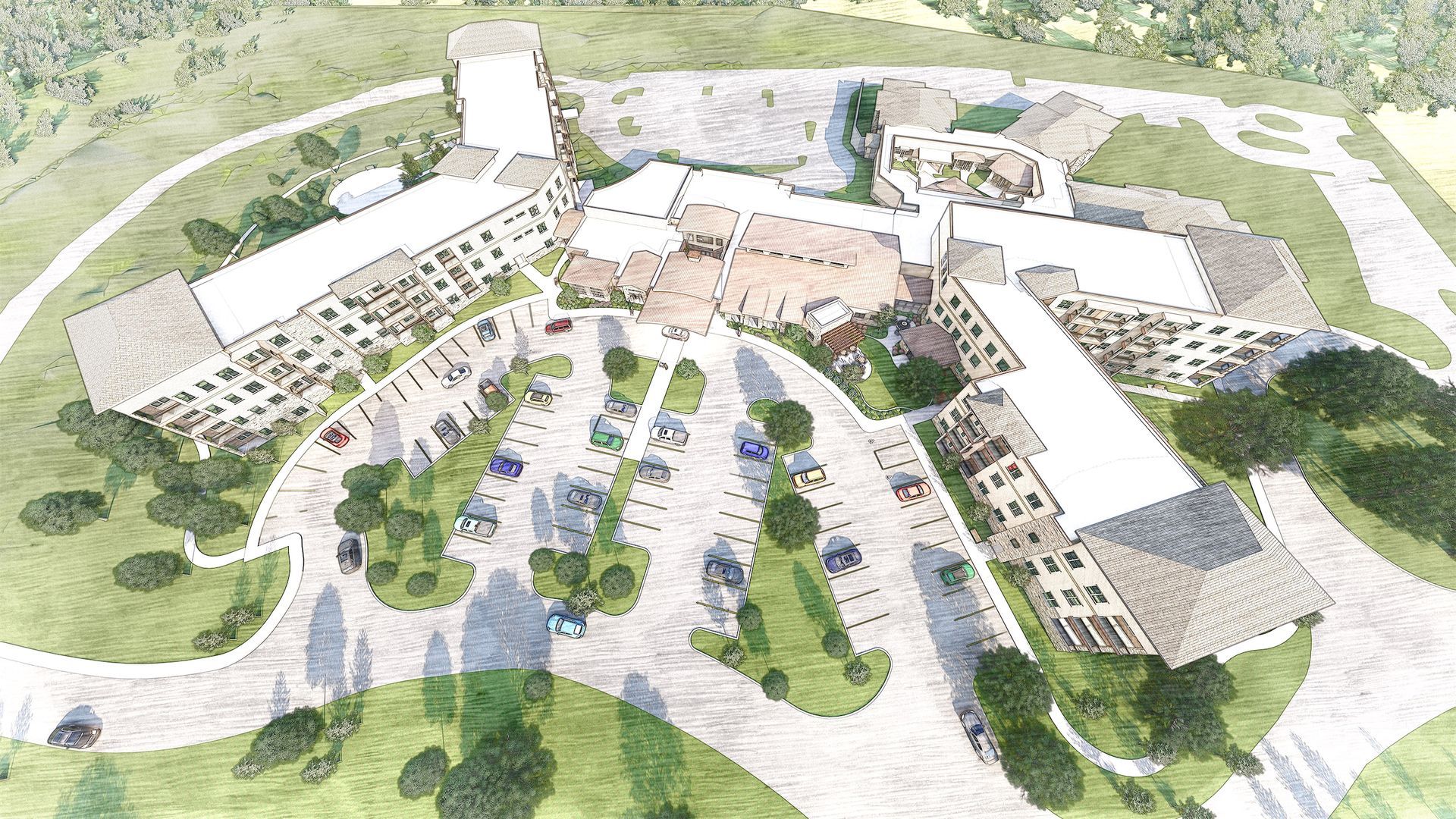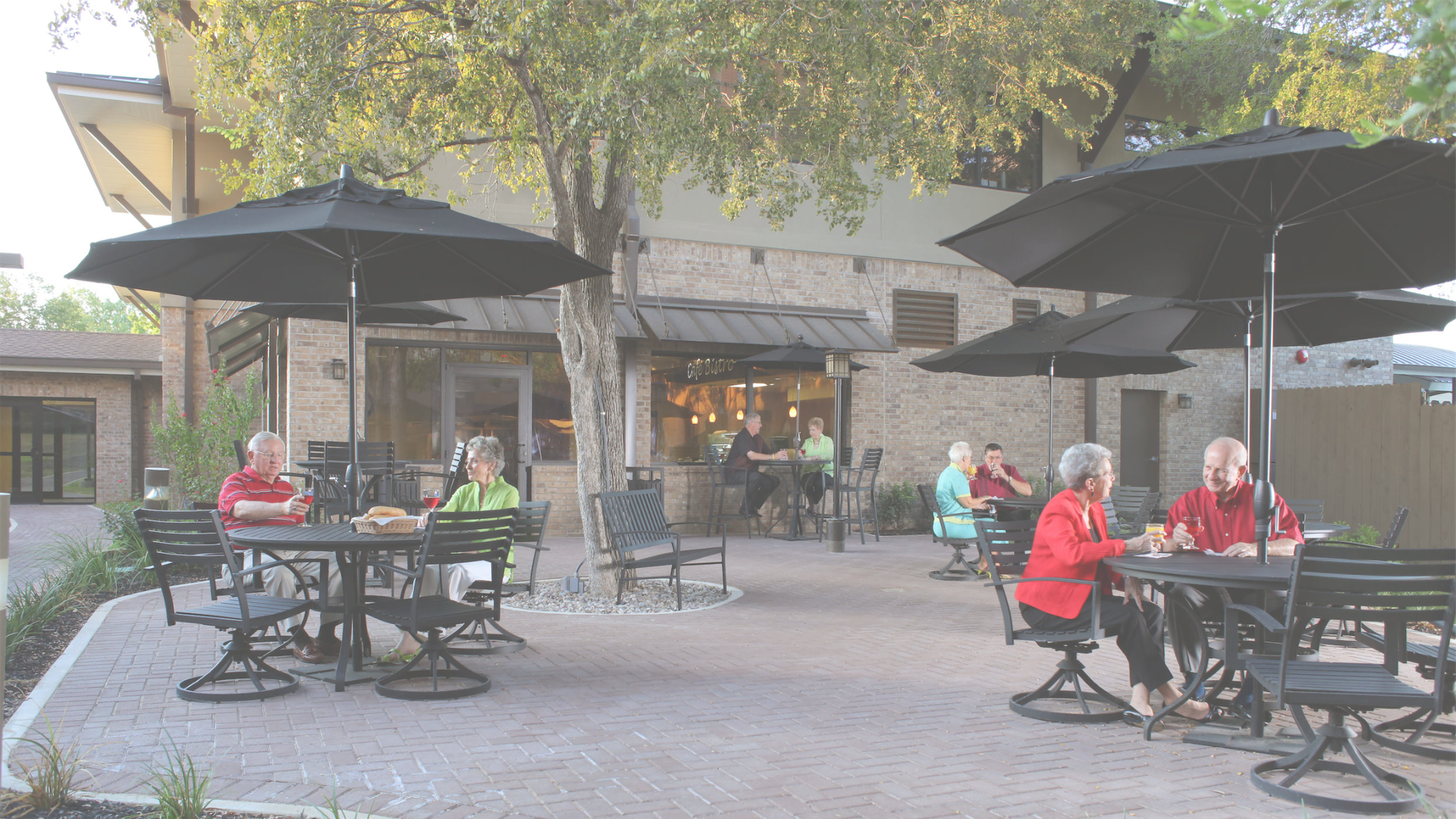If you’re planning to create a senior living/care project, one of the first questions you’ll likely ask is, “How much does it cost?”
While this seems like a straightforward question, the answer varies significantly depending on the specifics of your project.
Factors such as location, community size, amenities, and the level of care provided all play critical roles in determining the overall construction cost.
Instead of focusing on exact figures, this article will guide you through the major components of senior living/care construction costs and highlight ways to plan effectively and maximize value.
Breaking Down Senior Living/Care Construction Costs
Understanding the components of senior living/care construction costs is essential for planning and budgeting your project effectively.
Below, we’ll explore the key categories of expenses and how they contribute to creating a successful, resident-centered senior care/living center.
Soft Costs in Senior Living/Care Development
Soft costs may not be as visible as the hard costs, but they’re just as important in keeping the project on track.
- Permitting and Inspections: Navigating regulatory requirements and securing approvals reduces the risk of delays and ensures your community meets safety and compliance standards.
- Legal and Administrative Fees: These services facilitate everything from land surveys to resolving easement issues, keeping the project moving forward.
- Architectural and Design Costs: Thoughtful design is critical in creating a senior care/living center that balances functionality and beauty. Architects not only develop layouts tailored to resident and staff needs but also manage the design-to-construction transition, ensuring every detail aligns with your vision.
Investing in a quality architect, even at a higher cost, can be one of the smartest decisions for your project.
“The success of a senior living or care project lies in planning for the long term. From regulatory compliance to future-proofing for evolving care standards, an experienced architect helps clients avoid pitfalls and turn challenges into opportunities.”
— Paul Rheinlander, Founder of Rheinlander Architects
An experienced architect doesn’t just design your community—they help you optimize the value of your other costs.
From streamlining permitting processes to developing layouts that make the most of every dollar spent on materials and construction, their expertise can reduce waste, avoid costly delays, and maximize long-term value. Learn more about how our services can support every phase of your senior living/care project, from concept to completion.
Startup and Operational Costs
As the project nears completion, startup costs prepare the community to welcome residents and operate smoothly from day one.
- Furnishings and Equipment: From beds to seating, every piece of furniture contributes to a safe, comfortable living environment.
- Staff Recruitment and Training: Building a competent team of caregivers and support staff creates a positive experience for residents.
- Marketing: Effective outreach helps fill your residence quickly, establishing a strong foundation for long-term success.
These costs not only set the stage for opening day but also create a strong first impression for residents and their families.

Key Factors Affecting the Cost to Build Senior Living/Care
Understanding the factors that influence the cost of building senior living/care projects is essential for effective planning.
From location and land development to community size and the level of care you plan to provide, each decision impacts the overall financial landscape of your project. Let’s explore the key considerations.
Location and Land Development Costs
Choosing the right location is one of the most critical decisions in the development process. The cost of land, zoning approvals, and access to utilities are major factors that influence your budget.
Additionally, soil conditions and existing infrastructure play a significant role in determining site feasibility.
For example, communities built in urban areas may have higher land acquisition costs but benefit from better access to utilities and amenities. On the other hand, rural locations may offer affordable land but require more significant investment in infrastructure development.
Balancing affordability with accessibility sets your project up for success while avoiding unexpected challenges.
TIP:
Hiring your architect before you purchase land means your architect will be able to help you find property that will give you the most for your dollar. They can even run studies to determine soil conditions and how feasible your project actually is on that property.
Community Size: Balancing Space and Functionality
The size of your senior living/care project directly impacts construction costs.
Larger communities with more units, communal spaces, and amenities require greater investments in materials, labor, and utilities.
However, a well-planned larger community can also provide economies of scale, spreading fixed costs such as staffing and maintenance across more residents.
If you’re interested in learning more, this study by the University of Technology Sydney explores how provider scale and home size affect the costs of delivering residential aged care services.
Smaller communities, while potentially less expensive to build, require strategic space planning to maintain functionality. Every square foot should serve a purpose, whether it’s improving staff workflows, enhancing resident comfort, or fostering community interactions.

Amenities: Enhancing the Resident Experience
Amenities play a significant role in both the cost of development and the overall appeal of your residence.
Features like private rooms, wellness centers, dining facilities, and outdoor spaces improve the resident experience but also increase construction costs.
Balancing these amenities with practical considerations is key.
For example, adding a restaurant-style dining space may slightly increase upfront costs but can enhance the residence's marketability and attract more residents. Thoughtful design ensures that amenities align with the preferences of your target residents and their families.
Level of Care: Designing for Resident Needs
The level of care provided in a senior living project significantly impacts construction costs, operational expenses, and long-term financial planning.
- Independent living residences tend to have lower construction costs per unit, as they emphasize private living spaces, shared amenities, and a hospitality-style experience rather than extensive medical infrastructure.
- Assisted living and skilled nursing environments require specialized layouts, safety features, and medical-grade materials, increasing both initial construction expenses and ongoing operational costs.
- Memory care residences often require secure outdoor areas, enhanced wayfinding elements, sensory rooms, and staff-intensive layouts, all of which contribute to higher design and construction costs.
To learn more about memory care design principles, check out this article from Senior Housing News.
Balancing resident needs, regulatory compliance, and budget considerations is key to developing a financially sustainable project.
Factoring in long-term maintenance, staffing requirements, and adaptability from the start can help maximize return on investment while creating a high-quality living environment.

Maximizing Long-Term Value in Senior Living /Care
Designing and building a senior living/care project is about more than just meeting immediate needs; it’s about creating lasting value for residents, staff, and owners alike.
By focusing on thoughtful design, operational efficiency, and innovative solutions, you can lead your project towards long-term success.
“Maximizing value doesn’t mean cutting corners—it’s about understanding the priorities of residents, staff, and operators. By aligning design decisions with operational goals, we create communities that are efficient, cost-effective, and truly exceptional for everyone involved.”
— Michael Rheinlander, Principal of Rheinlander Architects
The Architect’s Role in Maximizing Value
Collaborating with an experienced architect is one of the most impactful ways to help your senior living/care project achieve long-term success.
Architects bring expertise that extends beyond design, helping to:
- Optimize Space Usage: Avoid unnecessary construction costs by ensuring every square foot serves a purpose.
- Navigate Regulatory Compliance: Prevent costly delays by adhering to all state and local requirements.
- Balance Luxury and Budget: Incorporate amenities that enhance the community’s appeal while managing costs effectively.
- Future-Proof Your Community: Anticipate changes in technology and senior care trends to ensure your community remains relevant.
Choosing the right architect is critical to the success of your project. For tips on making the best decision, read our blog on How to Choose an Architect for Your Senior Housing Project.

Tips to Budget for Senior Living/Care Construction Costs
Building a senior living/care home requires careful financial planning to keep your project on track while meeting the needs of residents and staff.
Below are two essential strategies to help you budget effectively:
1. Plan for Contingencies
Even the best-planned projects encounter unexpected challenges. Setting aside 10-15% of your overall budget as a contingency fund allows you to address unforeseen expenses, such as changes in material costs, weather delays, or adjustments required by inspections.
2. Collaborate with Experts Early
Engaging architects and consultants at the start of your project is key to creating a cost-effective design. Skilled architects can identify opportunities to optimize space, streamline workflows, and reduce construction waste. Early collaboration also helps align your vision with your budget, minimizing the need for costly revisions later in the process.
Start a Senior Living/Care Project with Confidence
Building a senior living/care home is a significant investment, but with the right planning and expertise, you can create a resident-centered community that balances cost and quality.
A thoughtfully designed community not only enhances the lives of residents and staff but also supports long-term operational success.
At Rheinlander Architects, we specialize in designing spaces that prioritize comfort, efficiency, and compliance. Our team works closely with clients to create innovative, cost-effective solutions tailored to their vision.
Contact us today to turn your vision into a successful senior care/living project.


